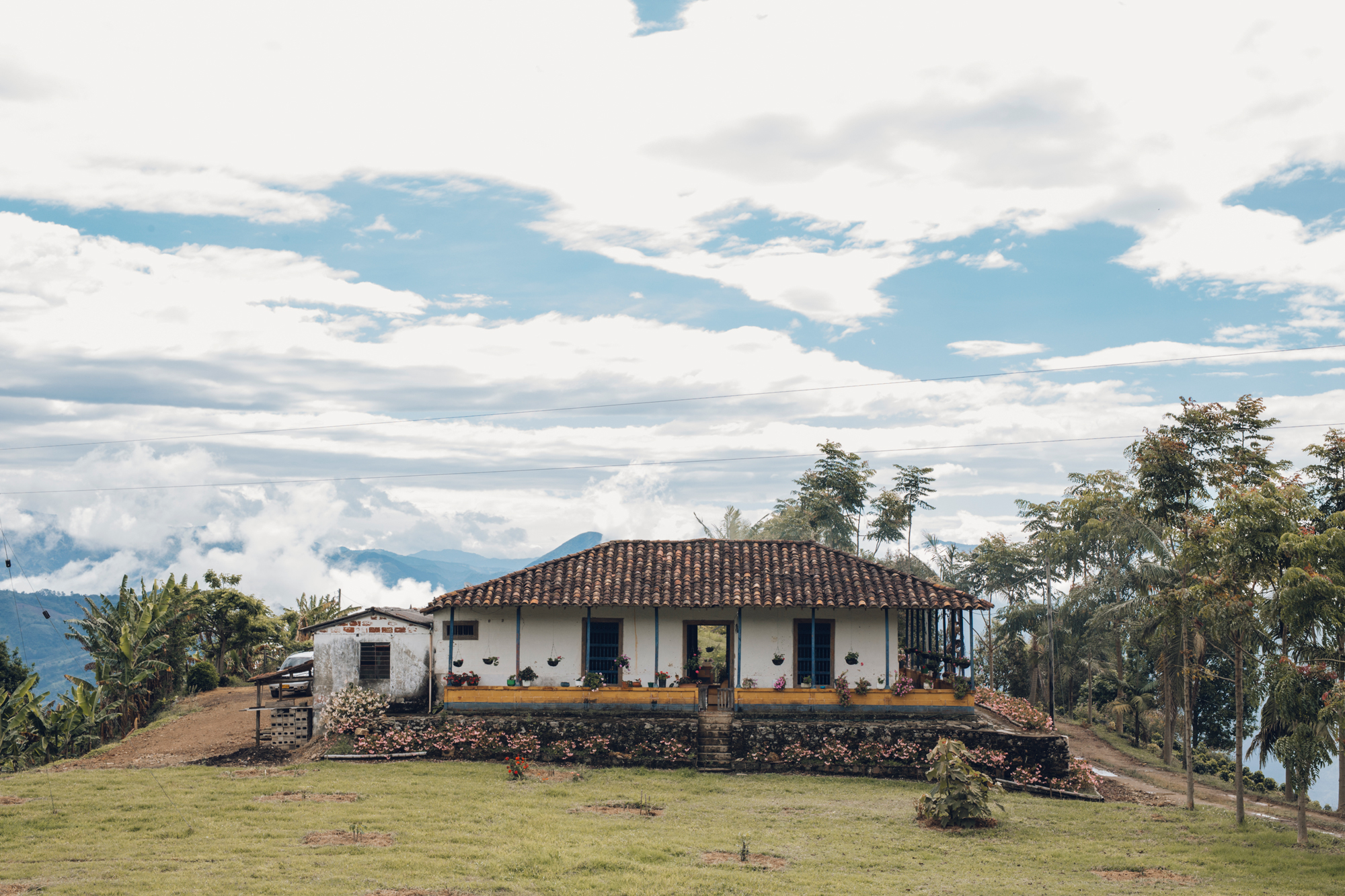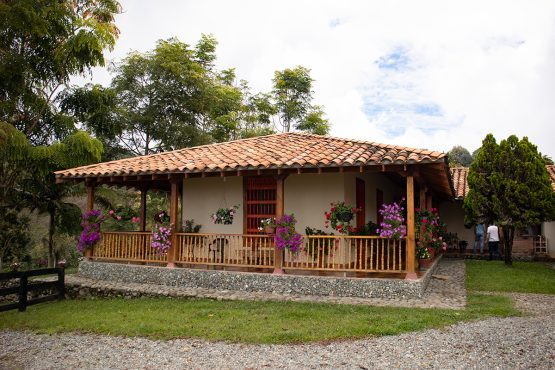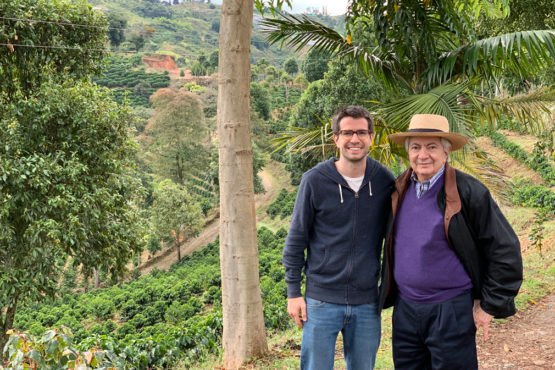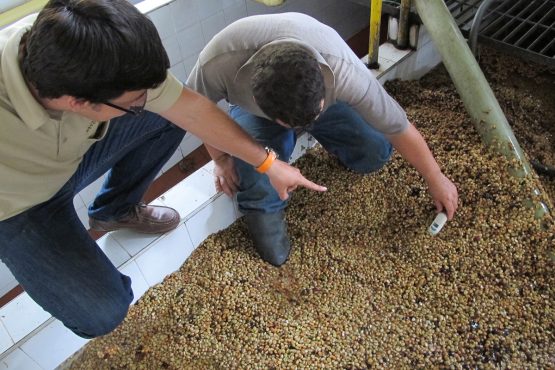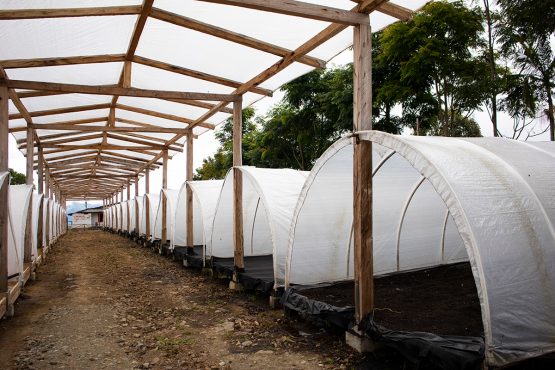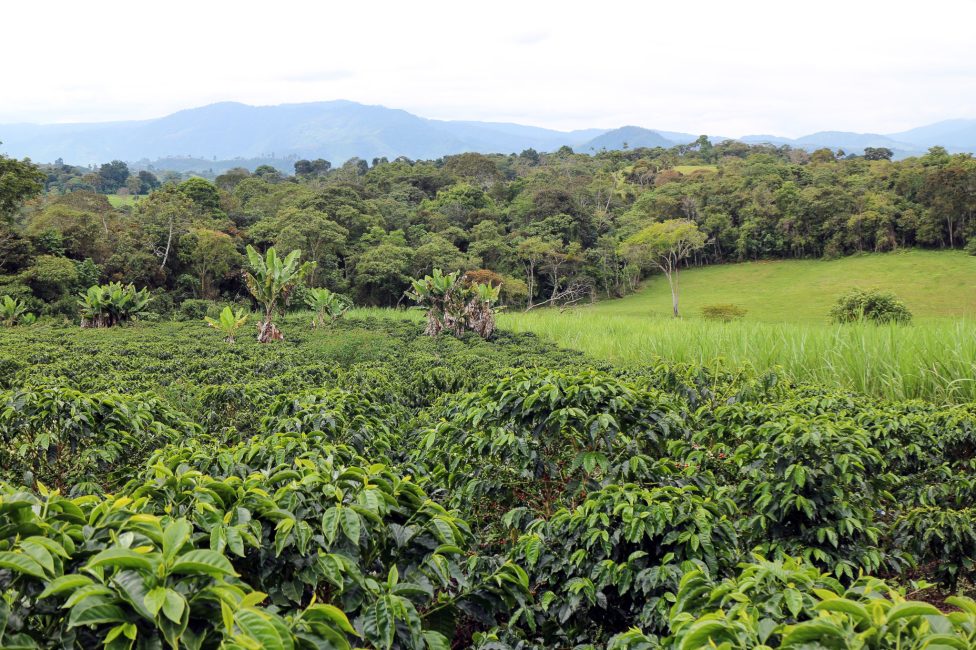Lomaverde Chiroso
Ripe strawberry, apricot and lychee, with tropical acidity and abundant floral aromas. Rich and complex.
This 100% Chiroso micro-lot was grown and processed at Finca Lomaverde, the largest of five farms that make up Santa Barbara estate. This stunning property is located in the small, hillside community of San Isidro, in the municipality of Santa Barbara, in Colombia’s state of Antioquia. At 35-hectares in size Finca Lomaverde has become the very heart of the estate, since being purchased by the Echaverría family in the 1990s. The farm sits at a staggering 1950m above sea level, with rich volcanic soil and abundant water sources that contribute to excellent productivity – even at such a high elevation.
ABOUT SANTA BARBARA ESTATE
Santa Barbara Estate was established by Pedro Echavarría Sr. in the 1970s, when he purchased a small, abandoned farm in his home state of Antioquia, in the north-west of Colombia. From the very beginning, Pedro Sr. recognised that selecting the right location for his farms was critical. For this reason, he chose to grow coffee high up in Antioquia’s side of the Andes mountain range, which had the perfect conditions to produce exceptional coffee, with a unique microclimate, rich volcanic soil and high elevations. His passion for coffee continued to flourish as the property eventually extended into the small town of Santa Barbara. By marrying hard work, precision and efficiency with ideal coffee-producing conditions, Pedro was able to increase the estate’s area under cultivation and develop a reputation as a quality-focused coffee producer.
Today, some 60 people are employed year-round at Santa Barbara, earning an average 30% above Colombia’s minimum wage. Half of them also receive free housing on the farm for themselves and their families, with many having worked for the family for a decade or more. A further 1,200 pickers are hired during the main harvest, comprised mainly of farmers from around Santa Bárbara Estate who pick coffee to supplement their income. The Echavarría family run extensive scholarship and financial aid programs for their worker’s children, and make an effort to help long-standing employees acquire their own piece of land upon retirement.
Beyond their work at the estate, the Echavarrías have gone on to positively impact hundreds of other coffee-growing families across Colombia through their other enterprises. After completing a degree at Tufts University in Massachusetts, USA, Pedro’s son – Pedro Jr. – returned to Colombia, and over the last decade or so has become deeply involved in the family’s businesses. These include a popular roastery and several cafés throughout the capital of Antioquia, Medellín, operating under the name Pergamino, where the family can showcase the incredible quality and complexity of coffees produced at their estates and those sourced from further afield. To help with these, the family enlisted the help of now Director of Coffee Leonardo Henao (known simply as Léo), who joined the company with many existing connections to smallholder producers through his previous work, both as an exporter and a coffee grower himself.
Along with the roastery and cafe operations, Pedro Jr. and Léo have been central to establishing and operating the company’s exporting arm, also named Pergamino, and their Allied Producer Program. Through this initiative, the Echavarrías and Henao have built long-standing relationships with a myriad of smallholder producers and connected them with international buyers like MCM more directly, helping them fetch higher prices for their crop and cultivating a more independent supply chain.
ABOUT THE CHIROSO VARIETY
Finca Lomaverde was initially planted with the traditional Caturra variety, which was the most popular variety during the 1970s and 1980s when most local farms were established. This was replaced with the more resilient Colombia in the early 2000s, after a devastating outbreak of coffee leaf rust. However, in recent years, the higher elevations have been replanted again with Chiroso, a new variety that originated in the Urrao region of Antioquia.
The Chiroso variety was ‘discovered’ in the municipality of Urrao (also in the state of Antioquia), where it was initially thought to be a mutation of the Caturra variety, which is widely planted in the area. Chiroso was first selected and cultivated for its resilience to the cool climate of Antioquia, but eventually became recognised for its complex and floral cup profile – and the opportunity it presents in attracting higher premiums from specialty buyers. Coupled with the slow fermentation process typical to the region, this variety has resulted in some outstanding coffee lots (including Colombia’s 2020 Cup of Excellence winner) and has brought international attention to this micro-region of Colombia. More recent DNA studies done on the variety have shown Chiroso to be an Ethiopian landrace variety (similar to the famous Gesha variety), though it is still unclear how it ended up in Antioquia, Colombia.
Local farmers have distinguished two types of Chiroso variety: ‘Chiroso Caturra’, which comes from a shorter tree that produces smaller beans, similar to Caturra, and ‘Chiroso Bourbon,’ which comes from a taller tree and produces more elongated beans, similar to Bourbon. The Chiroso Bourbon was only discovered recently, during one of Pergamino’s visits to José Arcadio Caro, one of the original growers to cultivate Chiroso some thirty years ago. José relayed that every so often there were taller trees growing on his farm, with a distinct size and shape of the cherries. The team at Pergamino isolated these trees and cultivated them on Léo’s land, Finca Los Palomos, and at Finca Lomaverde—eventually discovering that these plants produced coffees with outstanding complexity and flavour.
ABOUT ANTIOQUIA
Antioquia is located in central North-Western Colombia. Coffee was introduced to the region in the latter part of the 19thcentury. Since then, this mountainous, fertile department has 128,000 hectares of coffee that is produced by a mix of large estates and tiny farms.
Antioquia only recently became more accessible to specialty coffee buyers – largely thanks to a transformation of the department led by Sergio Fajardo, who was the governor of the department in 2012-2016. Sergio transformed Antioquia’s capital city, Medellín, from a violent and dangerous place to a world-class tourist destination with a strong economy. Coffee has played a significant role in this transformation, and as access to many producers has improved, the region has become one of Colombia’s most important and celebrated coffee-producing areas.
HOW THIS COFFEE WAS PROCESSED
The coffee is selectively hand-harvested and then transported to the family’s mill, La Joyería. To ensure workers only pick the very ripest cherries, the Echavarria family use a mix of education and economic incentives. They explain ‘We are working with our pickers to teach them why it is so important that they pick the fully ripened beans, as most of them have no idea of the effects of their job on the final product. We also complement this with a set of collective incentives. Throughout the day, we are taking constant measures of the quality of the picking, measuring what percentage of unripe beans we have. When this percentage reaches a certain point, a bonus kicks in, and then next day picking will be paid with a bonus. So far we have seen great results, and the mentality of the pickers has changed drastically.’
Pedro and Léo manage their wet mill with a blend of art, industrial rigour and scientific curiosity. Leo, in addition to being an agronomist, is also completing his masters degree in fermentation processing at the National University’s Medellin branch and has developed a unique method of processing coffee known as extended fermentation. In this method, two days’ worth of cherry pickings is used. Coffee picked on the second day is pulped and added to fermentation tanks that already hold the first day’s mucilage, which has been fermenting for 24hrs. In this method of ‘extended’ fermentation, the freshly picked and pulped coffee raises the pH level of the fermentation tank (i.e. makes it more alkaline), permitting longer fermentation times that will produce a fruit-forward cup, without the acetic acid produced by bacteria at a low pH. In this way, the team is able to maintain the correct pH level and avoid very low pH levels during processing that can lead to over fermented, boozy flavours.
In addition to giving more control over pH levels, this method also gives more control over yeast and bacteria activity. The inspiration for the process was taken from small farmers throughout Antioquia and Huila, who often have two to three days pickings fermenting together, as their farms are so small that one day’s picking is often not sufficient to make up an entire lot. Pedro and Leo have worked to perfect the process and adapt it for larger-scale production.
After fermentation, the coffee is washed and dried in silos for three days at a maximum temperature of 40 degrees Celsius. The slow and steady drying ensures even moisture loss and stable water activity. After the parchment is fully dried to the optimal humidity, it is delivered to Santa Barbara’s dry mill for assessment and storage.
